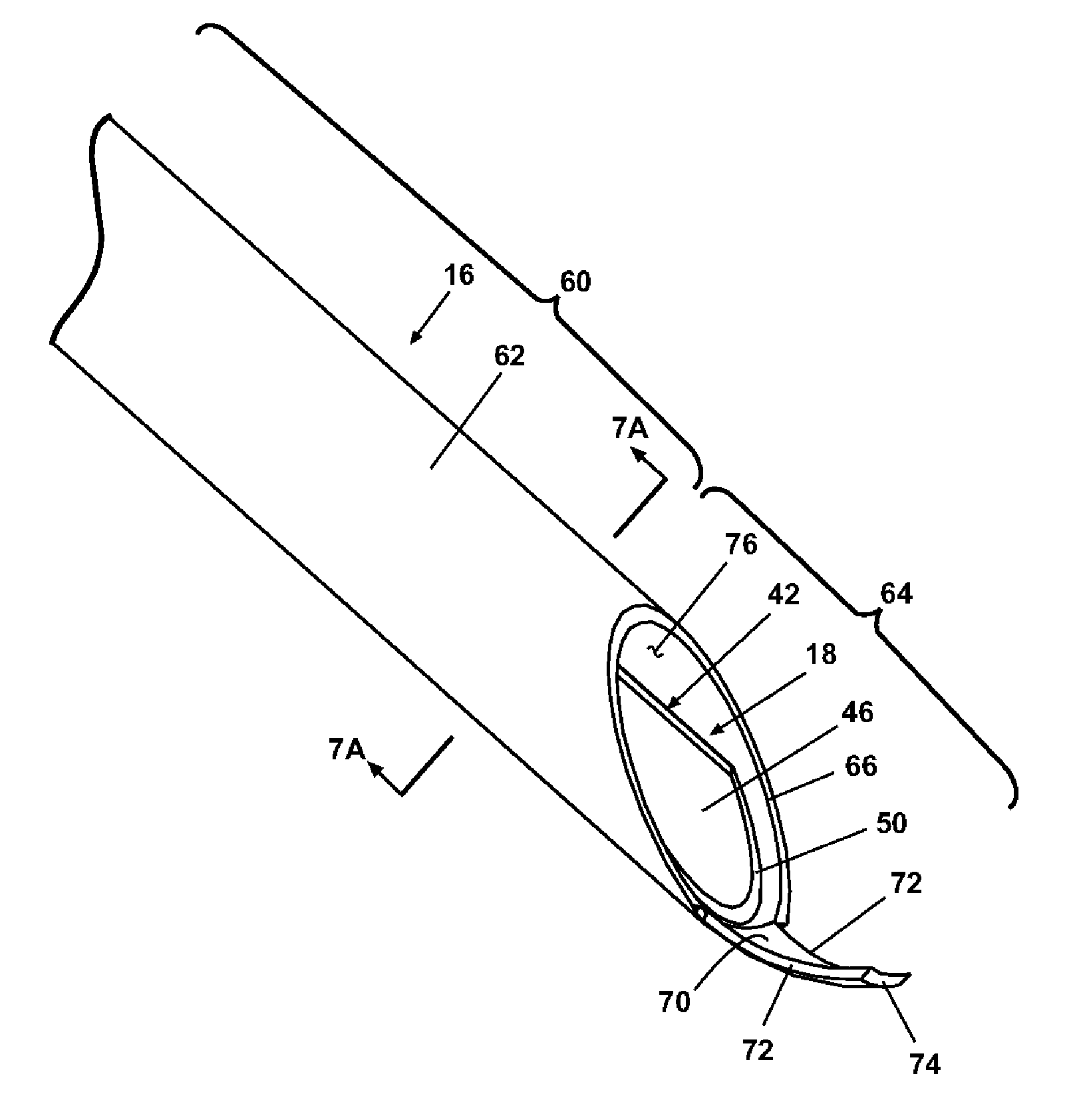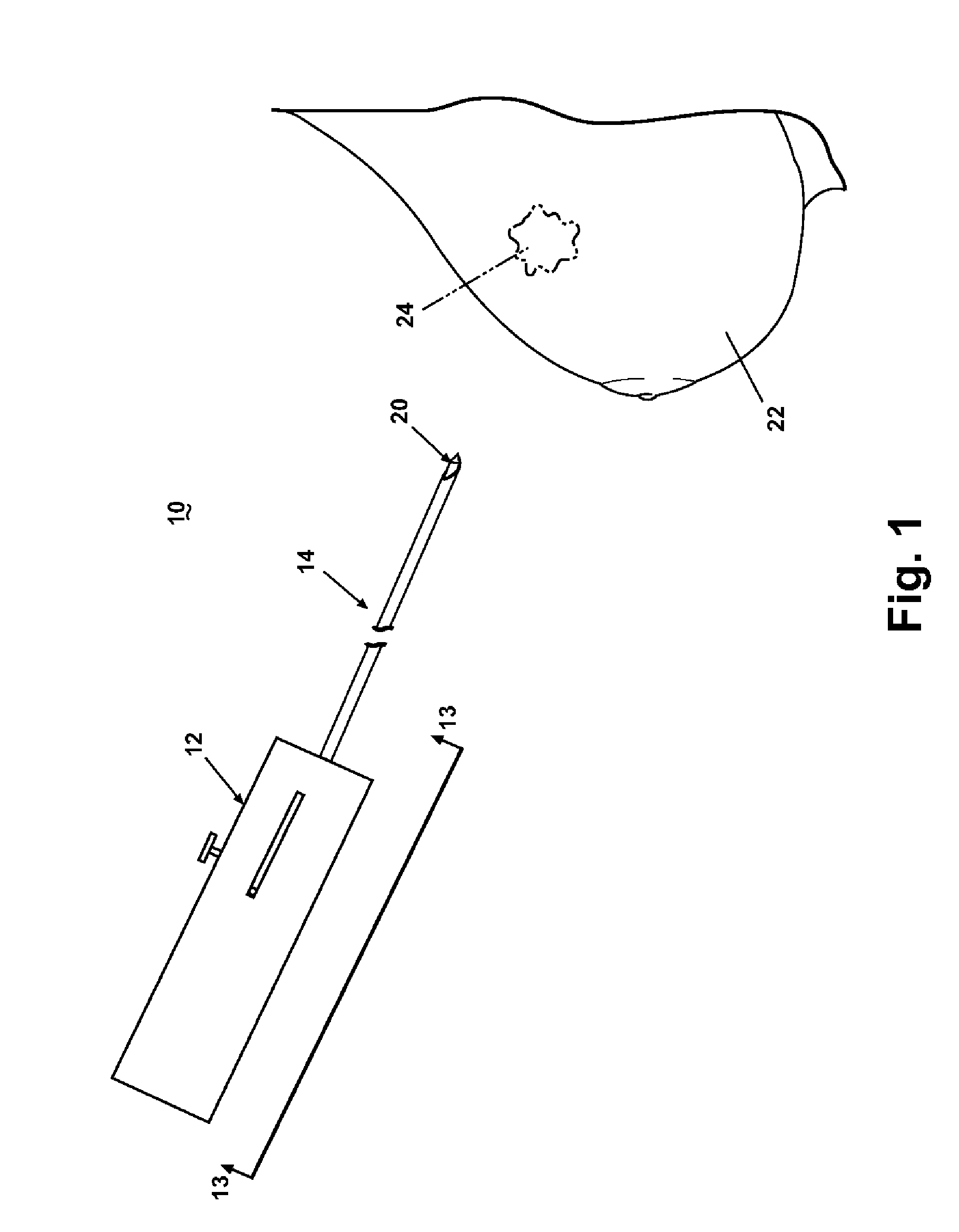Core biopsy device
a core biopsy and core technology, applied in the field of core biopsy devices, can solve the problems of small core biopsy relative, increased damage to the remaining tissue, and sample is not truly a full core sampl
- Summary
- Abstract
- Description
- Claims
- Application Information
AI Technical Summary
Benefits of technology
Problems solved by technology
Method used
Image
Examples
second embodiment
[0121]FIG. 10 illustrates the spoon cannula 18 in which the spoon section 42 is provided with an excising finger window 80 adjacent the insertion tip 48. The excising finger window 80 is a generally rectilinear opening in the arcuate wall 46 comprising a pair of parallel, spaced-apart longitudinal edges 82 defining a window width 84 adapted for slidable insertion of the excising finger 70. The excising finger window 80 has a distal edge 86 adjacent the insertion tip 48. The spoon cannula 18 is received as previously described in the lumen 76 for slidable movement of the spoon cannula 18 relative to the coring cannula 16.
first embodiment
[0122]The excising finger 70 is adapted for insertion through the excising finger window 80 so that the excising finger 70 bears against the distal edge 86. As the spoon cannula 18 is drawn into the coring cannula 16, the distal edge 86 bearing against the excising finger 70 will urge the excising finger 70 radially inwardly toward the longitudinal axis 76. Conversely, as the spoon cannula 18 is moved distally along the lumen 76, the finger 70 will resiliently return to its at-rest position. Because the distal edge 86 deflects the excising finger 70, the curvature of the excising finger 70 in its at-rest position can be much shallower, even approaching a straight line, thereby facilitating penetration of the excising finger 70 into the tissue 22 and the lesion 24. With a shallower curvature, the excising finger 70 will be less likely to deflect laterally during penetration. The deflection of the excising finger 70 by the movement of the spoon cannula 18 will enable the excising fing...
PUM
 Login to View More
Login to View More Abstract
Description
Claims
Application Information
 Login to View More
Login to View More - R&D
- Intellectual Property
- Life Sciences
- Materials
- Tech Scout
- Unparalleled Data Quality
- Higher Quality Content
- 60% Fewer Hallucinations
Browse by: Latest US Patents, China's latest patents, Technical Efficacy Thesaurus, Application Domain, Technology Topic, Popular Technical Reports.
© 2025 PatSnap. All rights reserved.Legal|Privacy policy|Modern Slavery Act Transparency Statement|Sitemap|About US| Contact US: help@patsnap.com



